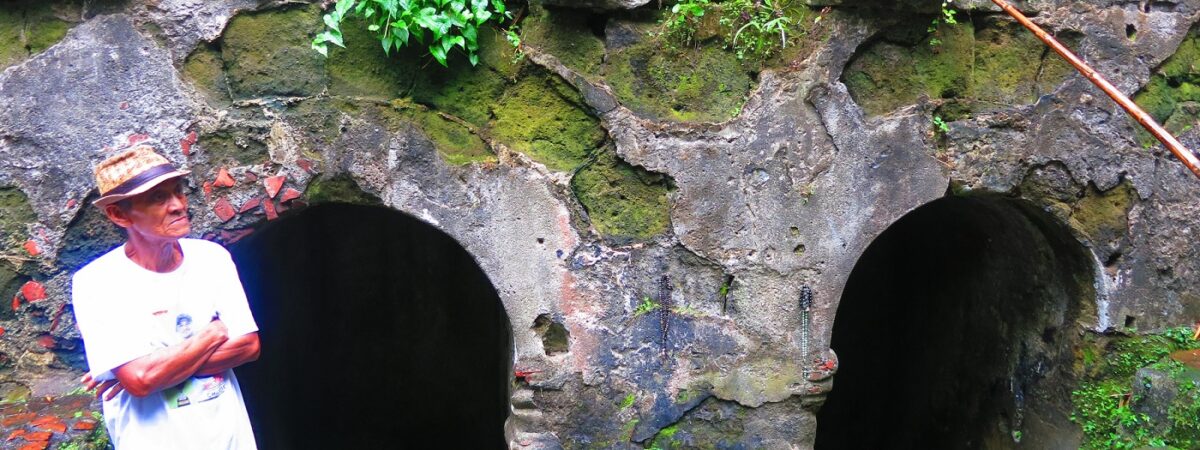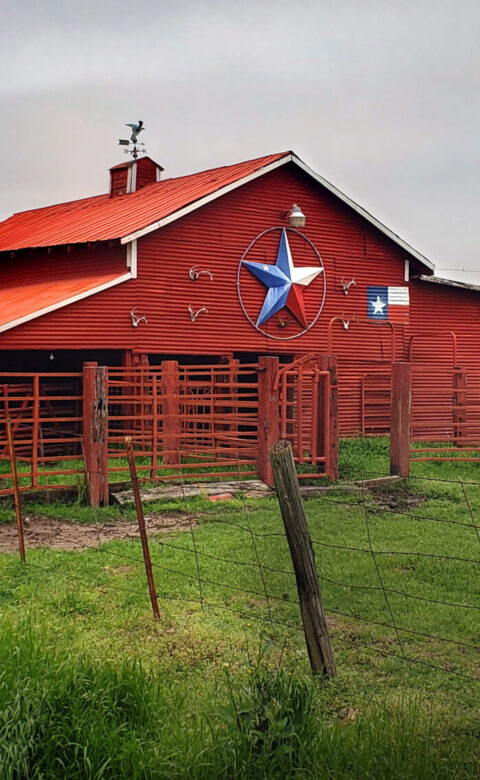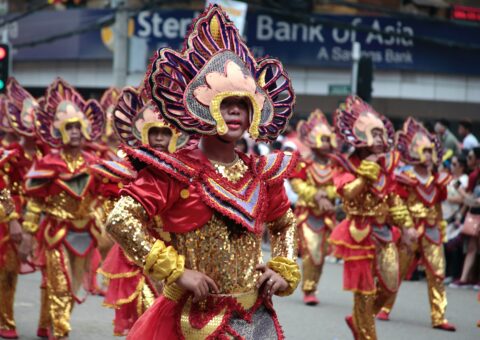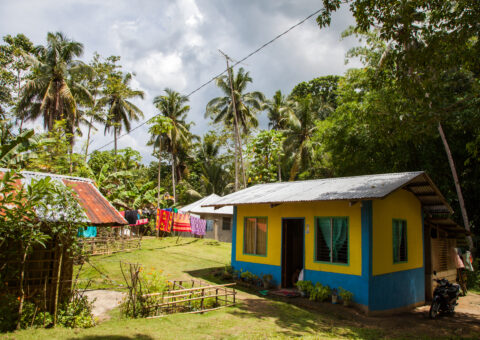Was it the awe-inspiring interiors of colonial-era buildings or the miraculous healing well water that transported Rhea Vitto Tabora back in time? Or was the opportunity to reflect on a place in a new way?
As we neared the town, my eyes sparkled with anticipation as I looked eagerly out the car window. I’d seen pictures and videos of Taal Heritage Town and its colonial architecture online, but I was unprepared for what it would look like when the past met the present right in front of my eyes.
My husband, 14-year-old son, and I had driven from Manila, a three-hour drive north from the heritage town. Stepping out of the car, I felt like I had stepped back in time — and was a world away from the Philippines’ bustling capital city. Our heads swiveled, taking in the ancestral homes, old churches and schools, and central plaza, all reminiscent of the Spanish colonial era and very much alive with more than 60,000 residents yet preserved as if frozen in time.
The towering Minor Basilica of St. Martin de Tours, a baroque-style Roman Catholic Church, is the town’s crown jewel. Also called Taal Basilica, the church stands majestically against the bright blue sky. Stepping inside, I gasped at the detailed religious murals painted on the dome ceilings in the trompe-l’oeil style. My eyes wandered over the antique sculptures of religious figures and the gigantic Doric-style altar, trying to imagine all that this interior had witnessed since its construction in 1575. Reconstructed multiple times over the years after being damaged by natural disasters, Taal Basilica is said to be the largest Catholic church in Southeast Asia.
We passed by the central plaza and it was full of life. The adults were chatting and laughing while the children were playing piko (hopscotch), seemingly oblivious to the sun’s brightness on a cloudless day. Some people were talking about the upcoming fiesta while others were happily joking around, simply enjoying each other’s company.
Many locals smiled at us as we walked around, likely because they could tell we were new to the town. We had great conversations with some of them. One of the friendly Taaleños we spoke with was named Raul. He offered us a ride on his tricycle so that he could give us a tour, but we politely declined and told him that wanted to explore every corner of this charming city on foot.
He spoke about Taal Heritage Town with pride: “I’m blessed to have been born and raised here. This place is truly special to me, and it has a lot of meaning. My great-grandfather was one of the first settlers in this area, and as a mason, he helped build one of the historic landmarks that are still standing today.”
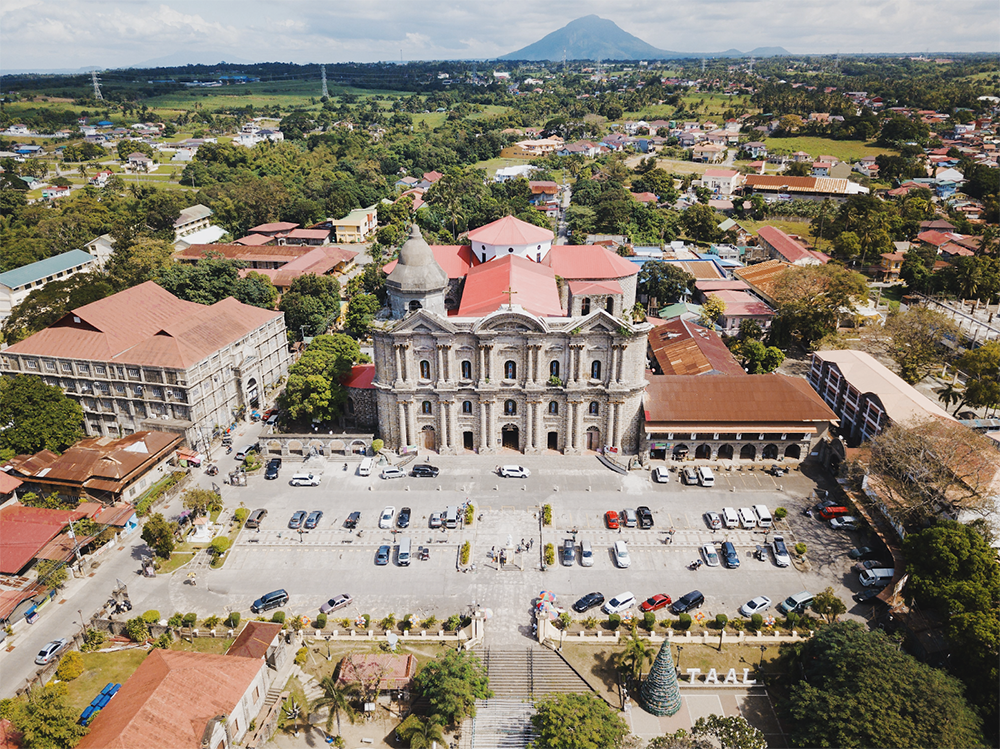
Raul was referring to Marcela and Felipe Agoncillo Museum. It used to be the home of Marcela and Felipe Agoncillo, where the couple often hosted Filipino expatriates fighting for independence from Spanish rule. Today, it is one of Taal’s most significant heritage sites. Marcela played an important role in Philippine history as she was the primary seamstress of the country’s first official flag.
“Her home has been turned into a museum dedicated to preserving her legacy, and it means a lot to us Taaleños,” Raul said, beaming with pride.
As we made our way to the next Spanish-Filipino ancestral home, we started chatting with another local resident. We asked him what it’s like to live in Taal Heritage Town. “It’s a special home for many of us. It’s like a living museum,” he said. “My great-grandfather used to serve in one of these heritage houses, and I grew up playing on the same streets.”
Though Taal Heritage Town isn’t part of my story, these stories made me feel connected to something much bigger than myself —like I was part of a long chain of history stretching back centuries before me.
While chatting with locals, we also learned some interesting facts about Taal Heritage Town that most visitors don’t know about. For example, Taal Heritage Town is home to a sanctuary dedicated to Our Lady of Caysasay, a miraculous wooden image believed to be more than 400 years old! It was said to be caught by fisherman Juan Maningcad in 1603 while fishing in the nearby Pansipit River.
With this fact in our back pockets, we went looking for the Shrine of Our Lady of Caysasay. The small chapel was known as the poor man’s church back in the day. A staircase at the back of the altar caught our attention. At the top, we discovered the room where the image of Virgin Mary was encased.
Outside the church, we met a girl named Mariel chatting happily with other kids her age. Since we looked like first-time visitors, she suggested we visit the Miraculous Wells of Sta. Lucia. These wells have water with healing power, she told us, leading us on the short walk from the chapel.
Stopping at the entrance of what looked like Aztec ruins, Mariel introduced us to the older man who was in charge. “We heard these wells have miraculous powers,” I said. “Is that actually true?” He nodded, pointing out that this was the exact spot where Our Lady of Caysasay was first seen in 1611.
He invited us to the twin wells, which were marked by a coral stone arch. Carved into the top part of the arch was an image of Our Lady Of Caysasay. He encouraged us to cleanse our faces and hands with the water to eliminate all our worries and illnesses. Surely we had nothing to lose with that offer. The caretaker scooped water from the well using a white plastic bucket tied to a two-metre bamboo pole, which served as its handle. We each took a turn washing our faces and hands. Was it the refreshing cold, clear water? Maybe it was the power of positive thinking. I can’t explain it, but as I walked away from the Miraculous Well of Sta. Lucia, I felt different. A bit more relaxed. A little more connected. Somehow, I just felt better.
I let that feeling linger as we made our way back to the población, the central area in the main town. Mariel reappeared, encouraging us to take the 125 steps of San Lorenzo Ruiz Steps. Making our way up these steps, poking into every corner of the town, winding along the streets, and stopping to chat with people we met along the way who call this place home, the passing of time seemed irrelevant — not only in this town but for us as well.
Daylight turned into sunset, and it was finally time for us to leave. As our car drove away from Taal Heritage Town, I held onto those feelings of awe, reflection, and connection. Looking out my window one last time, the centuries-old structures now seemed like old friends. Aspects of Filipino culture I had only ever read about or seen pictures of were now tangible and real.
And, I realized, Taal Heritage Town, which is known by some people as a living museum, is so much more than that: Filled with stories and memories, it’s a place where history lives on, but it’s also very much alive.

